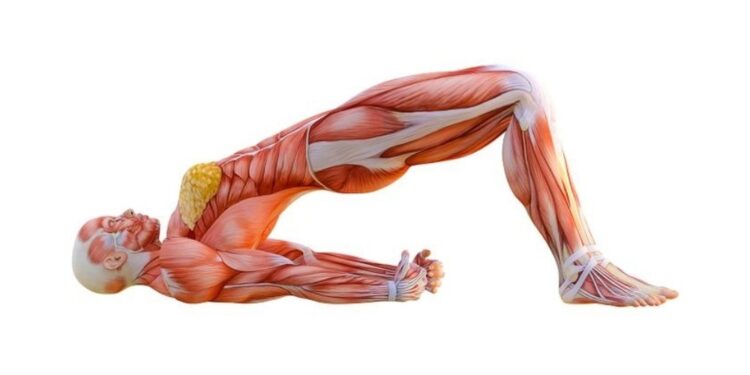Introduction
Lower back stretches can help alleviate pain and improve Flexibility. Hamstring stretch involves sitting on the floor with legs straight out, then slowly reaching towards the toes.
Importance of Lower Back Stretches
The lower back is one of the most vulnerable parts of the body, and it is prone to injuries and pain due to our sedentary lifestyles and improper posture. However, stretching can help keep your lower back flexible, strong, and healthy.
Stretching the lower back helps release muscle tension and stiffness, improving blood flow and oxygen supply to the area. It also helps improve the range of motion of the spine and hips, which reduces the risk of injuries and pain.
Some effective lower back stretches include the hamstring stretch, cat-cow stretch, child’s pose, and knee-to-chest stretch. These stretches help stretch the muscles and ligaments around the lower back, reducing pressure on the joints and discs.
Incorporating lower back stretches into your daily routine is essential, especially if you have a sedentary lifestyle or a job requiring you to sit for long periods. Stretching can help prevent back pain and improve posture, reducing the risk of future injuries.
In conclusion, lower back stretches are crucial for maintaining a healthy and flexible lower back. Incorporating them into your daily routine can prevent pain and injuries and improve your overall quality of life.
Hamstring Stretch for Lower Back Pain
Hamstring stretches are an effective way to alleviate lower back pain by stretching the muscles in the back of your legs, which can help reduce the pressure on your lower back. Tight hamstrings commonly cause lower back pain; stretching them can help relieve this pain.
To stretch the hamstring:
- Sit on the floor with your legs straight out.
- Slowly reach forward towards your toes, keeping your knees straight.
- Hold the space for 15-30 seconds, and then slowly release.
- Repeat the time two to three times, working towards touching your toes.
This stretch benefits people of all fitness levels and can be done anywhere. It helps those who sit for long periods at work or during travel.
It is important to remember that stretching should not cause pain. If you feel any discomfort, ease off the stretch or stop altogether. It is also essential to warm up before stretching, as cold muscles are more prone to injury.
Incorporating hamstring stretches into your daily routine can help alleviate lower back pain and improve Flexibility. Speak to your doctor or physical therapist if you have chronic lower back pain, as they can recommend a personalized stretching program that suits your needs.
Cat-Cow Stretch for Spine Mobility
The cat-cow stretch is a famous yoga pose that can help improve spine mobility and alleviate lower back pain. This stretch involves moving the spine through a range of motion, which can help release muscle tension and enhance Flexibility.
To perform the cat-cow stretch, start on your hands and knees with your wrists directly under your shoulders and your knees under your hips. Inhale as you drop your belly towards the floor and lift your head and tailbone towards the ceiling (cow pose). Exhale as you round your spine towards the top and tuck your chin towards your chest (cat pose). Repeat the movement for 5-10 breaths, focusing on the direction of your spine.
This stretch can be modified for beginners by reducing the range of motion and focusing on breathing. The cat-cow play is also an excellent warm-up exercise before other activities that require spinal mobility, such as lifting weights or running.
Incorporating the cat-cow stretch into your daily routine can help improve spine mobility, reduce lower back pain, and improve overall Flexibility. Before beginning any new exercise program, speak to your doctor or physical therapist if you have chronic pain or injuries.
Child’s Pose for Lower Back Release
Child’s pose is a gentle yoga pose that can help release tension in the lower back and improve overall Flexibility. This pose involves sitting back on your heels and stretching your arms out in front of you, allowing your spine to lengthen and your hips to open up.
To perform the child’s pose, start on your hands and knees with your wrists directly under your shoulders and your knees under your hips. Slowly lower your hips towards your heels, stretching your arms before you. Rest your forehead on the floor and breathe deeply, allowing your back muscles to relax and release tension. Hold the pose for 30-60 seconds, then slowly return to seated.
Child’s pose is a gentle stretch suitable for people of all fitness levels, and it can be modified for those with injuries or limited mobility. It benefits those who sit for long periods at work or during travel.
Incorporating a child’s pose into your daily routine can help release tension in the lower back, reduce stress, and improve overall Flexibility. Before beginning any new exercise program, speak to your doctor or physical therapist if you have chronic pain or injuries.
Knee-to-Chest Stretch for Lower Back Muscles
The knee-to-chest stretch is a gentle yoga pose that can help stretch and lengthen the lower back muscles. This pose benefits people suffering from lower back pain or sedentary lifestyles.
To perform the knee-to-chest stretch:
- Lie on your back with your knees bent and your feet flat.
- Bring one knee towards your chest and hold onto the back of your thigh with both hands.
- Gently pull your knee towards your chest, feeling a stretch in your lower back.
- Hold the time for 15-30 seconds, and then release.
- Repeat the space on the other side, then stretch on both sides again.
This stretch can be modified for beginners by using a strap or towel to help pull the knee toward the chest. It is essential to avoid any pain or discomfort during the stretch.
Also, Read: How to Make Delicious Pancakes: A Simple and Easy Recip











Discussion about this post